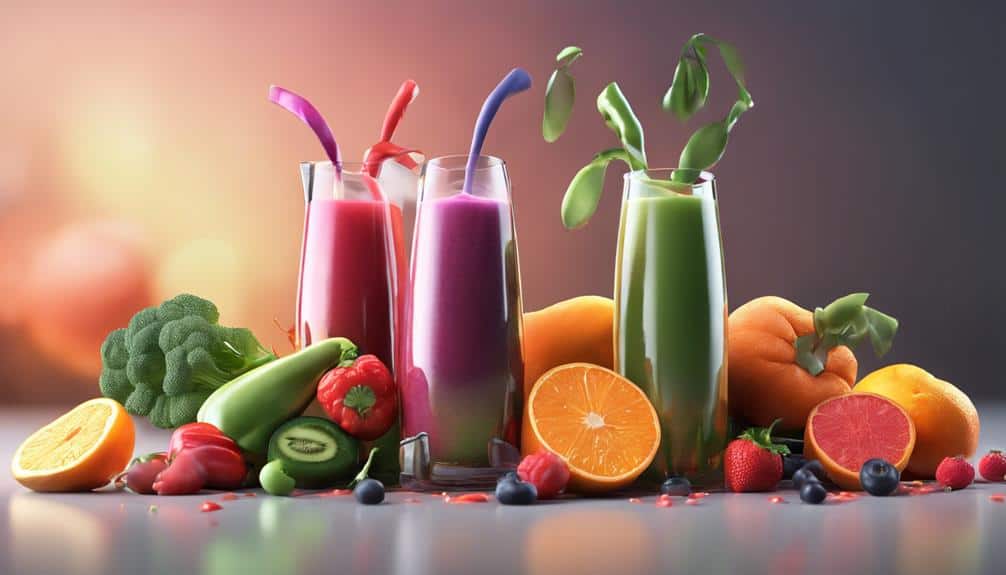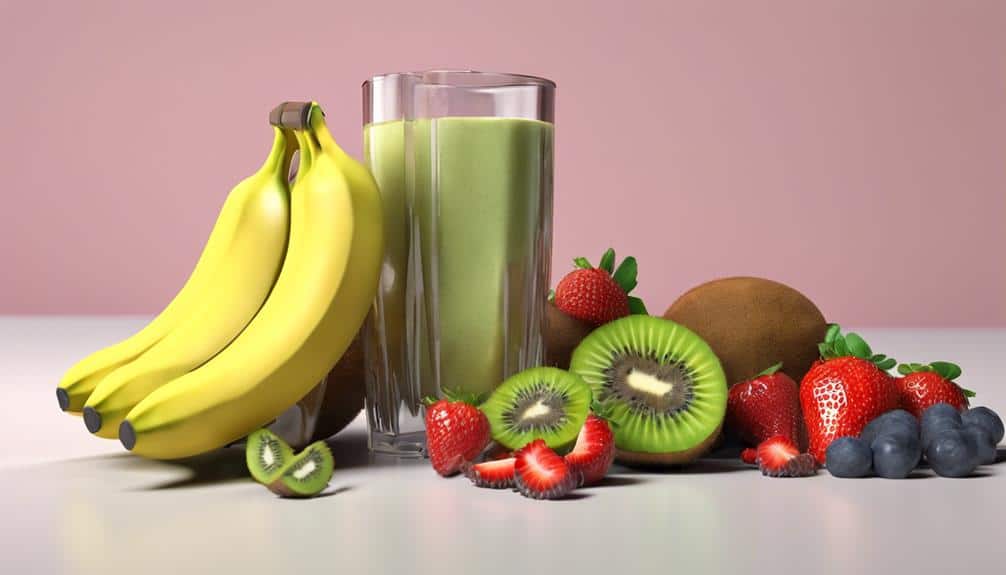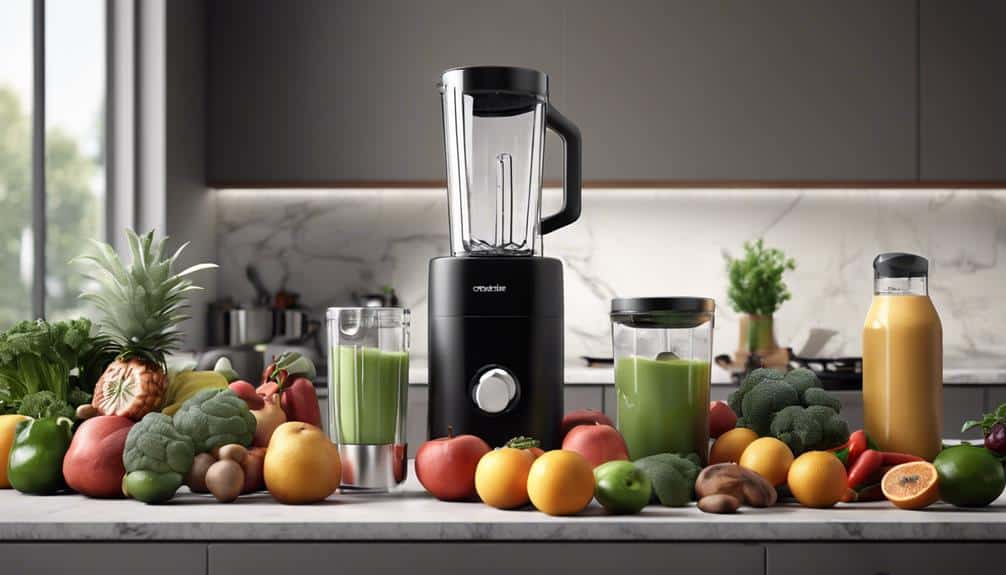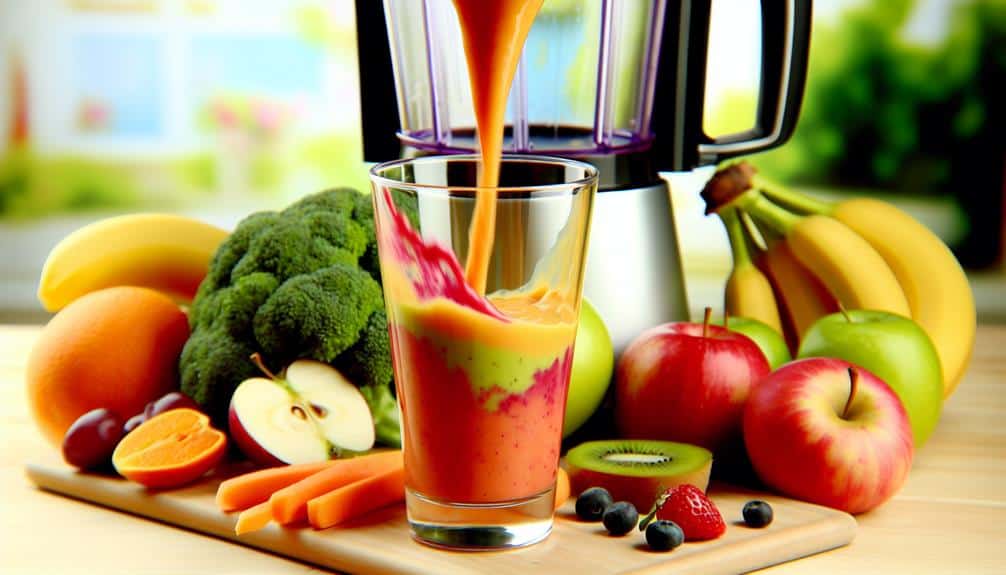Mingle taste and nutrition effortlessly in your protein juice with expert tips and recipes - your next favorite sip
When it comes to protein juice, striking a balance between taste and nutrition can be a game-changer. Imagine sipping on a refreshing beverage that not only satisfies your cravings but also fuels your body with essential nutrients.
Curious to discover the secrets behind crafting a perfect protein-packed juice or smoothie that fits seamlessly into your daily routine? Stay tuned as we unveil tips, tricks, and recipes that will elevate your beverage game and leave you craving for more.
Table of Contents
Benefits of Protein Juice

Indulging in protein juice regularly enhances your vitality and boosts your overall health with its nutrient-packed goodness. Protein juice is a powerhouse of antioxidants, vitamins, minerals, and complete proteins, offering a wide array of health benefits. This smoothie not only provides you with a convenient way to increase your protein intake but also supports your skin's radiance and overall well-being.
The blend of ingredients in protein juice, such as spinach, cucumber, celery, apple, lemon, and ginger, creates a nutrient-dense concoction that's both delicious and beneficial for your health. The vitamins and minerals present in these ingredients work synergistically to ensure you're getting a complete protein source in a refreshing and tangy drink.
Essential Ingredients for Protein Smoothies
Enhance the nutritional value and flavor of your protein smoothies by incorporating essential ingredients like plant-based protein powder, Greek yogurt, nut butter, seeds, and egg whites. These high-protein additions not only make your smoothie more filling but also support muscle recovery and growth.
Plant-based protein powders are a popular choice for those seeking a vegan or vegetarian protein source. Greek yogurt and nut butter are excellent options for a creamy texture and delicious taste while adding a significant protein punch to your smoothie recipe.
Chia seeds, known for their omega-3 fatty acids and fiber content, are a great addition to boost protein and nutritional value. When making your smoothie, consider including frozen fruit to enhance the flavor and texture while keeping the drink refreshing.
Experiment with different protein sources like unsweetened soy milk, cottage cheese, or kefir to diversify your smoothie options and enjoy a variety of flavors packed with protein.
Top Protein-Rich Fruits for Juices

When considering protein-rich fruits for your juices, bananas stand out as a great option due to their content of around 1.3 grams of protein per medium-sized banana. Avocados are another protein-rich fruit suitable for smoothies, providing about 2 grams of protein per half avocado. Kiwi fruits offer a moderate protein content for juices, with around 2 grams of protein per cup of sliced kiwi. Blackberries are also protein-rich fruits for smoothies, offering approximately 2 grams of protein per cup. Oranges are a good source of protein for juices, providing around 1.2 grams of protein per medium-sized orange.
Incorporating these protein-rich fruits into your juices and smoothies can help boost your protein intake in a delicious and refreshing way. Consider blending frozen bananas with blackberries for a protein-packed smoothie or adding avocado to your juice for a creamy texture and added protein. Kiwi fruits and oranges can also be great additions to your protein-rich juice recipes. Enjoy experimenting with different combinations to create flavorful and nutritious drinks.
Blender Tips for Smoothie Perfection
To achieve smoothie perfection, start by selecting a high-speed blender for optimal blending results. This powerful appliance will ensure your smoothies turn out smooth and creamy every time.
Here are some essential blender tips to take your smoothies to the next level:
- Add Frozen Ingredients: Using frozen fruits or vegetables not only adds a refreshing chill to your smoothie but also eliminates the need for ice, preventing your drink from becoming watered down.
- Include a Protein Boost: Enhance the nutritional value of your smoothie by adding protein-rich ingredients like Greek yogurt, protein powder, or nut butter to keep you full and energized.
- Layer Ingredients Properly: Layering your chopped ingredients in the blender can help promote even blending and prevent large chunks from being left behind. Remember to add the liquid first to aid in the blending process and prevent ingredients from sticking to the blender blades. When blending, make sure to use the high-speed setting for a short duration to avoid overheating the mixture.
Prepping Protein Juice for the Day

For optimal flavor extraction and convenience, chop fresh produce like apples, lemons, ginger, spinach, cucumbers, and celery into 1-inch pieces when prepping protein juice for the day.
Using a slow masticating juicer, such as the Hurom Slow Juicer, ensures nutrient retention and rich, flavorful juice output.
To enhance taste and freshness, begin with chilled produce. This step not only improves the flavor but also helps maintain the nutrient content of the juice.
When you have leftover protein juice, store it in airtight glass containers in the fridge. This storage method keeps the juice fresh for up to 24 hours, allowing you to enjoy it without losing its quality.
Protein Juice Vs. Protein Smoothies: Comparison
Wondering about the differences between protein juice and protein smoothies? When comparing protein juice and protein smoothies, here are some key points to consider:
- Protein Juice: Made by extracting liquid from fruits and vegetables, protein juice contains a higher protein concentration than regular juice.
- Protein Smoothies: Blended beverages that include protein-rich ingredients like protein powder, yogurt, nuts, or seeds.
- Nutritional Information: Protein juice is typically lower in calories and carbohydrates than protein smoothies, making it a good option for those watching their intake.
Both protein juice and protein smoothies offer unique benefits. Protein juice provides a quick protein boost, while protein smoothies are more customizable and filling. You can tailor protein smoothies to meet specific dietary preferences, such as vegan or low-carb diets. Experiment with ingredients like coconut water, peanut butter, almond milk, or fruit in your protein smoothie recipe to find the perfect blend for your taste and nutritional needs.
Frequently Asked Questions
What Is the Best Juice for Protein Smoothies?
For the best juice in your protein smoothies, consider ingredients like spinach, cucumber, celery, apple, lemon, and ginger. Combining fruits and vegetables like apple, spinach, cucumber, and celery creates a complete protein profile in a juice.
Opt for nutrient-dense choices to enhance the health benefits of your smoothies. Remember, cucumbers contain 11% protein, while celery has 17%, making them excellent options for boosting protein content in your drinks.
What Is a Good Protein to Put in a Smoothie?
When making a smoothie, a good protein choice to consider is whey protein for its high protein content and quick absorption.
For those on a plant-based diet, options like pea, hemp, or rice protein powders are excellent alternatives.
Greek yogurt adds creaminess and tanginess to your smoothie while providing a protein boost.
Nut butters such as almond or peanut butter offer protein, healthy fats, and flavor.
Chia seeds, flaxseeds, or hemp seeds can also add protein and a crunchy texture.
What Is the Best Liquid to Make a Protein Shake?
When making a protein shake, you should choose a liquid that suits your taste and nutritional needs. Options like water, milk, coconut water, and fruit juices are popular choices. Consider factors such as flavor, texture, dietary restrictions, and protein content when selecting the best liquid for your shake.
Whether you prefer the creaminess of milk, the hydration of coconut water, or the sweetness of fruit juice, your choice can enhance the overall taste and nutritional value of your protein shake.
How Do You Blend the Perfect Protein Shake?
To blend the perfect protein shake, start by choosing a high-quality protein powder and adding a variety of fruits and veggies for nutrition.
Experiment with different liquids like water or milk and consider adding nut butter or Greek yogurt for extra protein.
Blend everything thoroughly for a smooth texture.
Don't forget to mix it well to enjoy a creamy and delicious protein shake every time.

